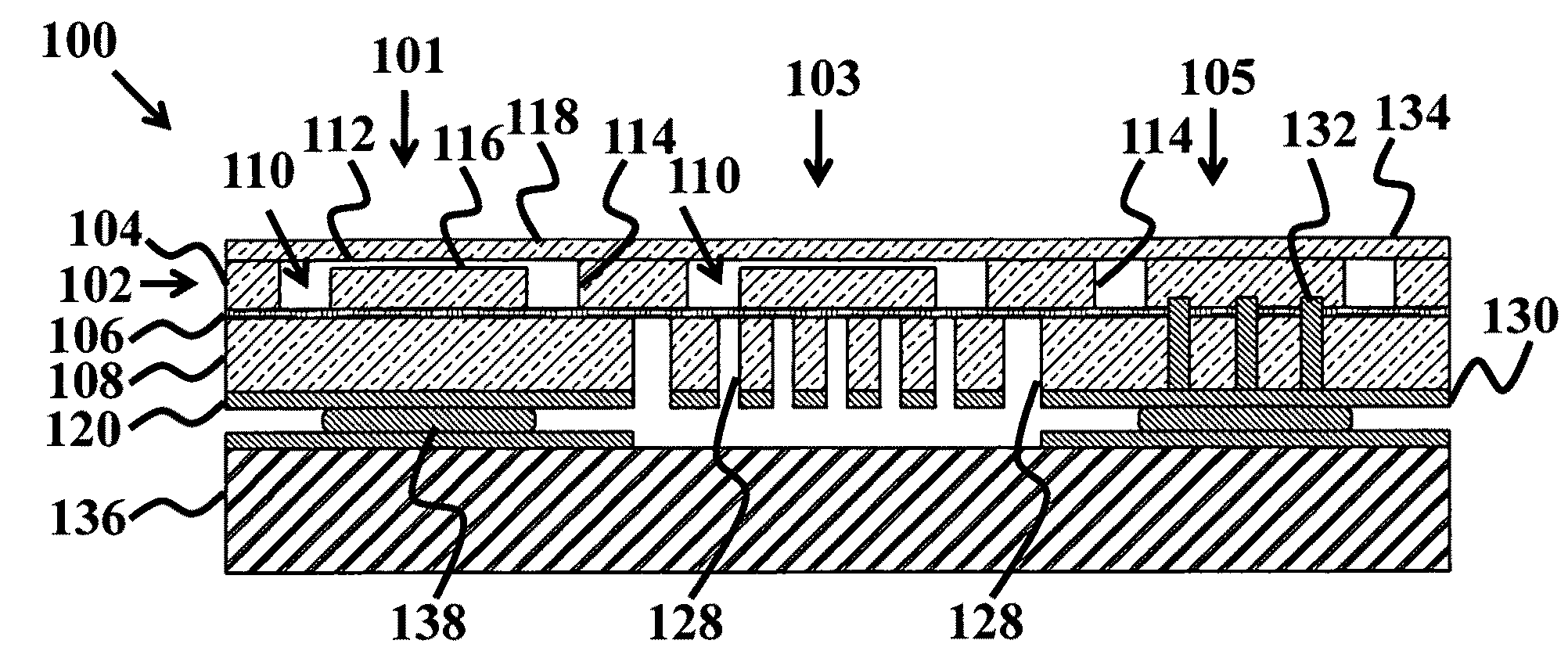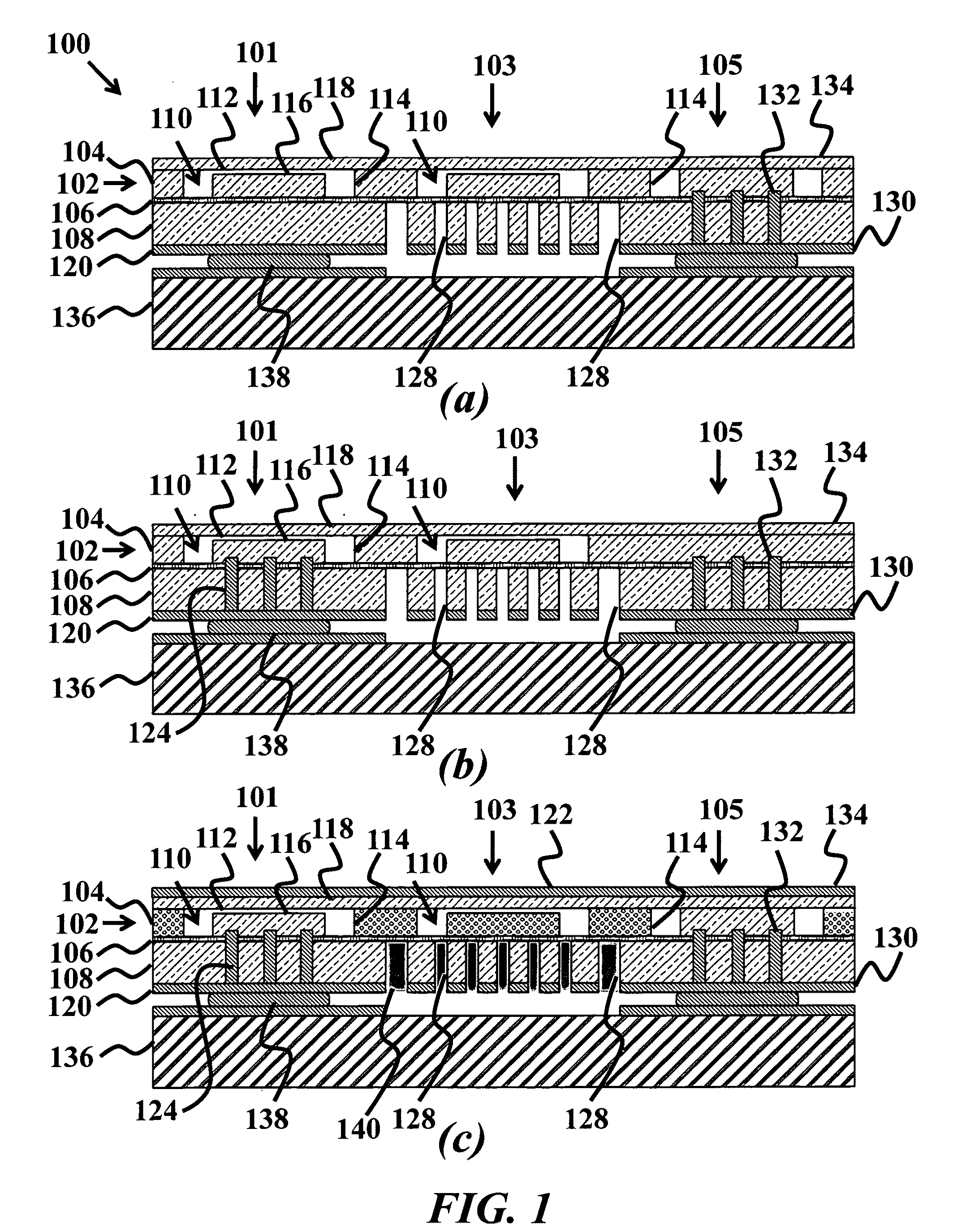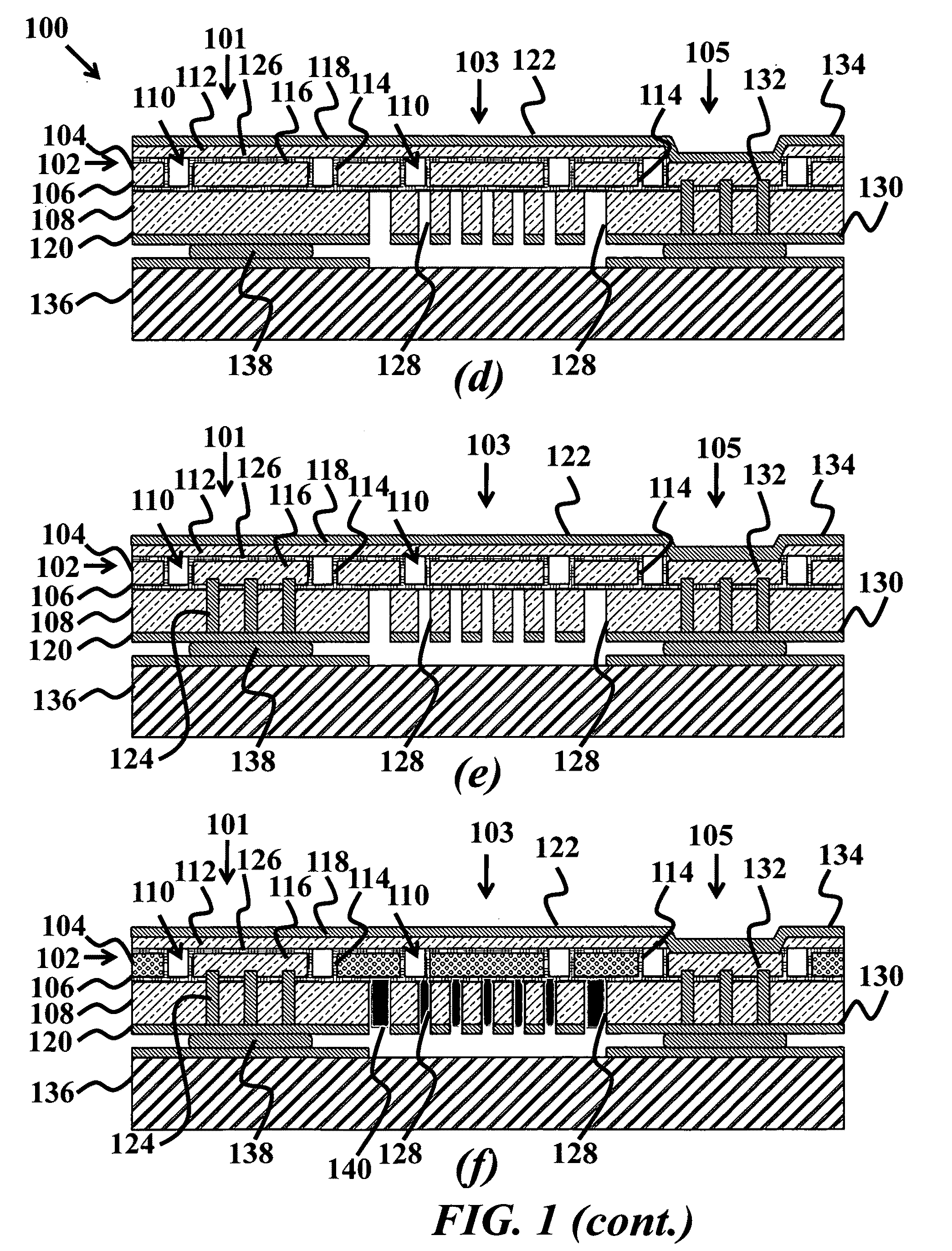Direct wafer bonded 2-D CUMT array
a technology of cumt array and wafer, applied in the field of direct wafer bonding to cumt array, can solve the problems of difficult wafer-to-wafer fusion bonding, inability to direct wire bond to array elements, and complex process of integrating through-wafer vias with cmuts
- Summary
- Abstract
- Description
- Claims
- Application Information
AI Technical Summary
Problems solved by technology
Method used
Image
Examples
Embodiment Construction
[0082]Although the following detailed description contains many specifics for the purposes of illustration, anyone of ordinary skill in the art will readily appreciate that many variations and alterations to the following exemplary details are within the scope of the invention. Accordingly, the following preferred embodiment of the invention is set forth without any loss of generality to, and without imposing limitations upon, the claimed invention.
[0083]The invention includes a device and method for providing fully populated two dimensional (2D) capacitive micromachined ultrasonic transducer arrays, based on direct wafer bonding. The advantages are: (1) a reduced number of fabrications steps; (2) an improved CMUT cell structure (increased electrical breakdown voltage and reduced parasitic capacitance, (3) a better design flexibility and a high controllability for the whole frequency range in which CMUT arrays can be used (1 kHz-300 MHz); (4) a built-in support structure that elimin...
PUM
| Property | Measurement | Unit |
|---|---|---|
| thickness | aaaaa | aaaaa |
| hole diameter | aaaaa | aaaaa |
| thickness | aaaaa | aaaaa |
Abstract
Description
Claims
Application Information
 Login to View More
Login to View More - R&D
- Intellectual Property
- Life Sciences
- Materials
- Tech Scout
- Unparalleled Data Quality
- Higher Quality Content
- 60% Fewer Hallucinations
Browse by: Latest US Patents, China's latest patents, Technical Efficacy Thesaurus, Application Domain, Technology Topic, Popular Technical Reports.
© 2025 PatSnap. All rights reserved.Legal|Privacy policy|Modern Slavery Act Transparency Statement|Sitemap|About US| Contact US: help@patsnap.com



